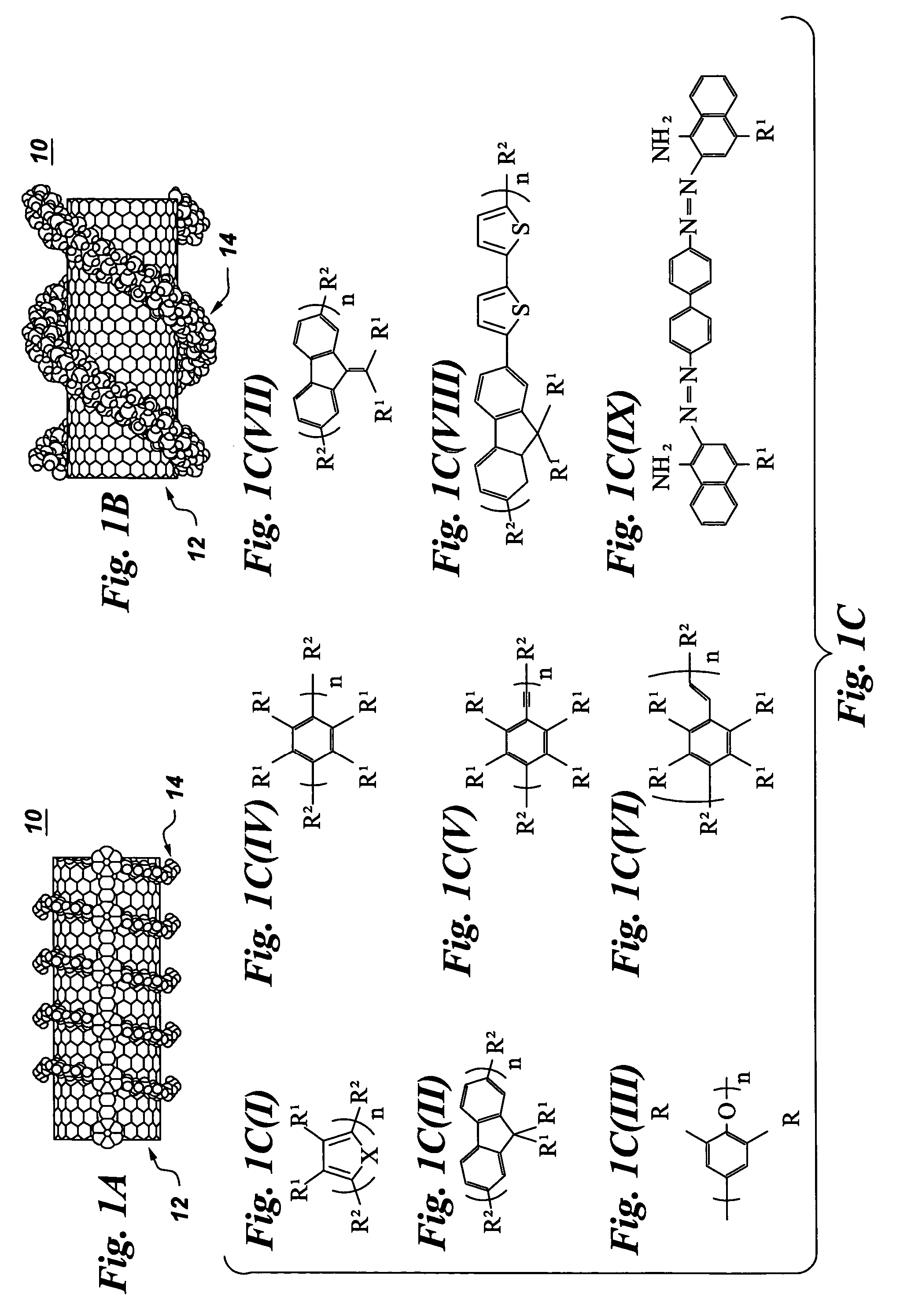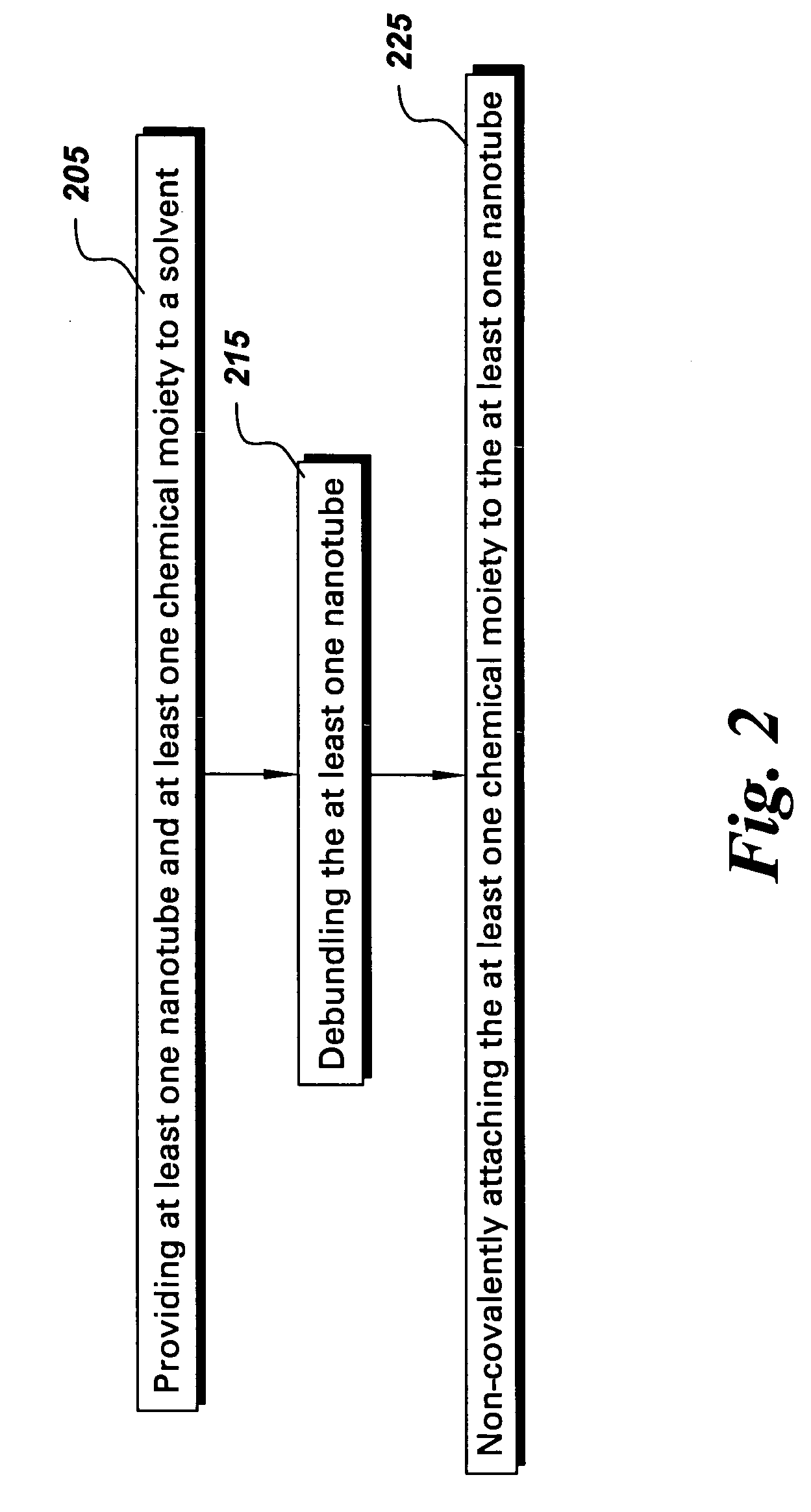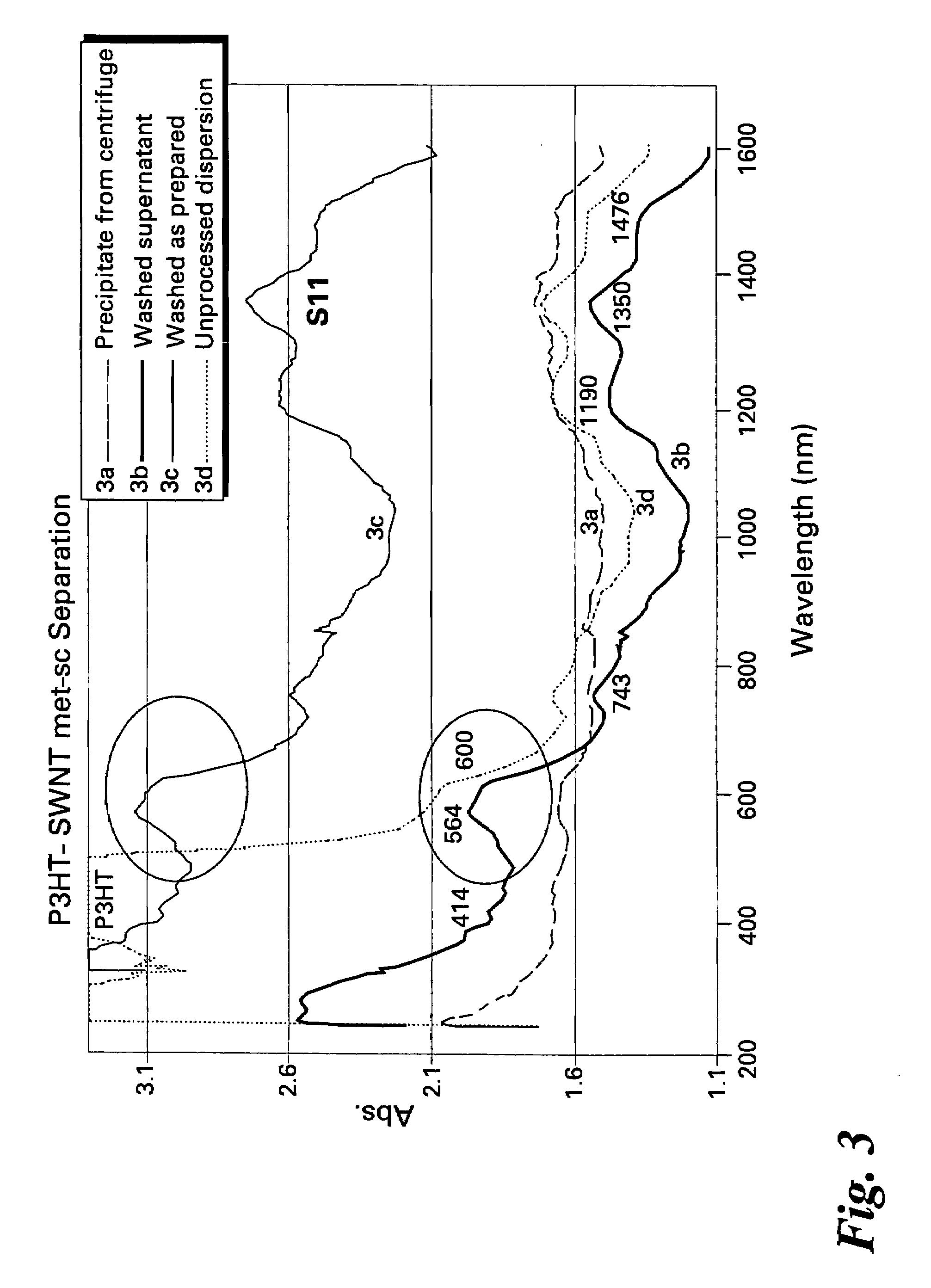Nanotubes and methods of dispersing and separating nanotubes
a technology of nanotubes and nanotubes, applied in the field of nanotubes, can solve the problems of swnt covalent and ionic functionalization being detrimental, existing methods suffering from various problems, and current methods only attaining limited solubility
- Summary
- Abstract
- Description
- Claims
- Application Information
AI Technical Summary
Benefits of technology
Problems solved by technology
Method used
Image
Examples
example 1
[0057]Example 1 describes the preparation of a nanostructure in which poly-3-hexyl-thiophene (P3HT) is non-covalently attached to at least one single wall carbon nanotube.
[0058]Solution 1 was prepared by adding 7.5 ml of CHCl3 to 14.9 mg SWNT and sonicating the resulting mixture in a water bath for 15 minutes. Solution 2 was prepared by adding an identical volume of CHCl3 as in solution 1 to 7.1 mg of P3HT and sonicating for 5 minutes, until complete dissolution occurred and a deep orange colored solution resulted. Solution 2 was added to solution 1, and the resulting solution 3 was sonicated for 20 minutes. An opaque, dark brown solution resulted.
[0059]Solution 3 was centrifuged for 10 minutes at 3000 rpm. The supernatant was carefully decanted from the fraction of precipitated SWNTs remaining at the bottom of the centrifuge tube. A portion of the removed supernatant was filtered through a 4-4.5 micron sintered glass filter and repeatedly washed with CHCl3 to remove any excess P3HT...
example 2
[0060]Example 2 describes the synthesis of a nanostructure comprising a conjugated soluble polymer, dihexylpolyfluorene (DHPF), wherein R1 is C6H13 and R2 is H or a halogen, non-covalently attached to at least one carbon nanotube, and subsequent characterization.
[0061]Solution 1 was prepared by adding 10.0 ml of CHCl3 to 10.0 mg SWNT, followed by sonication in a water bath for 30 minutes. Solution 2 was prepared by adding an identical volume of CHCl3 as in solution 1 to 12.4 mg of DHPF and sonicating for 1 minute, until complete dissolution occurred and a light yellow colored solution resulted. Solution 2 was added to solution 1 to form solution 3, which was then sonicated for 45 minutes. An opaque, dark blue solution resulted.
[0062]Solution 3 was then centrifuged for 5 minutes at 3500 rpm. The supernatant was carefully decanted from the fraction of precipitated SWNTs remaining at the bottom of the centrifuge tube. A portion of the removed supernatant was filtered through a 4-4.5 mi...
PUM
| Property | Measurement | Unit |
|---|---|---|
| diameters | aaaaa | aaaaa |
| diameters | aaaaa | aaaaa |
| diameters | aaaaa | aaaaa |
Abstract
Description
Claims
Application Information
 Login to View More
Login to View More - R&D
- Intellectual Property
- Life Sciences
- Materials
- Tech Scout
- Unparalleled Data Quality
- Higher Quality Content
- 60% Fewer Hallucinations
Browse by: Latest US Patents, China's latest patents, Technical Efficacy Thesaurus, Application Domain, Technology Topic, Popular Technical Reports.
© 2025 PatSnap. All rights reserved.Legal|Privacy policy|Modern Slavery Act Transparency Statement|Sitemap|About US| Contact US: help@patsnap.com



